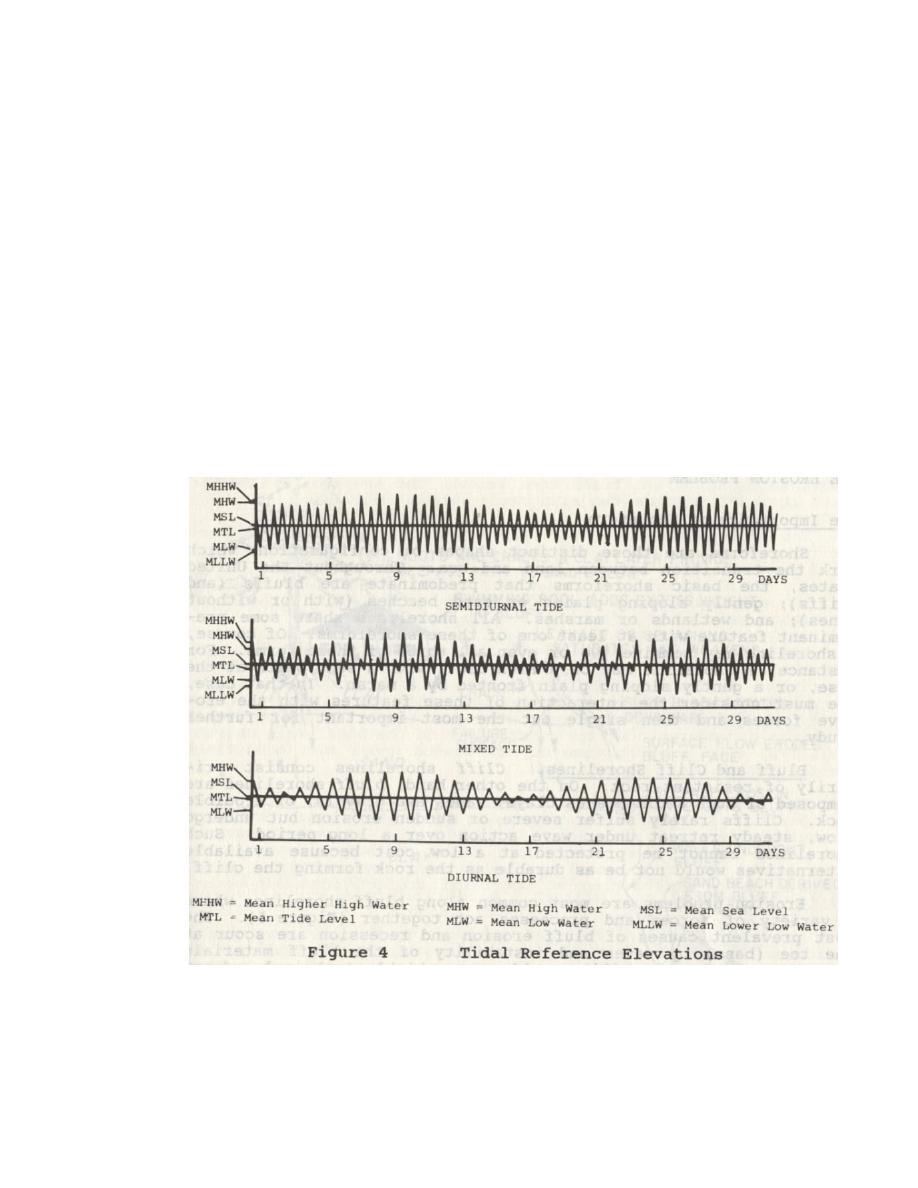
referenced to the International Great Lakes Datum (IGLD). Each lake has a designated chart datum [Low
Water Datum (LWD)] based on the IGLD. Depths and water levels are commonly given as feet above or
below the chart datum for that lake.
Storms tend to increase the Stillwater level because of atmospheric pressure differences, high
winds, and the effects of large breaking waves. Atmospheric pressure differences across a large water
body can commonly cause one- or two-foot rises in the water level in the lower pressure area. The stress
on the water's surface from high storm winds also tends to drive the water on shore to above normal
levels (storm setup) until balanced by the tendency for the water to flow back to a lower level. These
high winds also generate large waves, which tend to pile water on shore as they break, raising the
Stillwater level further.
Enclosed water bodies (such as the Great Lakes) can also respond to storm forces by seiching.
This occurs when storm winds drive the water surface higher at the downwind end of a lake. As the
storm passes, this pent-up water is released, causing it to move toward the opposite end of the lake,
resulting in oscillations. This back and forth movement (seiching) will noticeably continue for several
cycles. Seiching effects are most noticeable on Lake Erie because its long axis lines up with
predominant storm wind directions, and its relatively shallow depths lead to higher storm setup levels.
The Great Lakes are also subject to long-term changes in lake levels. Astronomical tides on the lakes
are small and not pertinent to the practical problems of shore protection design. However, records of lake
levels dating from 1836 reveal seasonal and annual changes due to variations in precipitation annually and
from year to year. Lake levels (particularly Ontario and Superior) are also partially controlled by regulatory
10



 Previous Page
Previous Page
